Design Optimization Methodology for Diversion Structure with Concrete Cofferdam Using Risk-Based Least-Cost Design Method
Abstract
:1. Introduction
2. Design Optimization Methodology for a Diversion Structure
2.1. Risk-Based Least-Cost Design
2.2. Risk Analysis
2.3. Methodology of Design Optimization
3. Application
3.1. Gulpur Hydropower Project
3.2. Failure Probability Analysis Using MCS
3.2.1. Flood Routing Analysis
3.2.2. Limit State Function
- (1)
- Dead load.
- (2)
- Headwater pressure.
- (3)
- Uplift pressure.
- (4)
- Silt.Silt pressures are considered in the design if suspended sediment measurements indicate that such pressures are expected.
- (a)
- Horizontal.
- (b)
- Vertical.
- (5)
- Earthquake forces.
3.2.3. Loadings and Combinations
3.2.4. MCS
3.3. Calculation of EMV
+ Failure probability of upstream cofferdam
× [(Reconstruction cost of upstream & downstream cofferdams) + Delay LD]
+ Overflow probability of upstream cofferdam × Recovery cost
4. Results
5. Discussion
6. Conclusions
Author Contributions
Funding
Informed Consent Statement
Conflicts of Interest
References
- Bulletin 48a: River Control during Dam Construction; ICOLD (International Commission on Large Dams): Paris, France, 1986.
- Dam Design Standard; KWRA (Korea Water Resources Association): Daejeon, Republic of Korea, 2011.
- Tung, T.K.; Yen, B.C.; Melching, C.S. Hydrosystems Engineering Reliability Assessments and Risk Analysis; McGraw-Hill: New York, NY, USA, 2006. [Google Scholar]
- Afshar, A.; Rasekh, A.; Afshar, M.H. Risk-based optimization of large flood-diversion systems using genetic algorithms. J. Eng. Optim. 2009, 41, 259–273. [Google Scholar] [CrossRef]
- Rasekh, A.; Afshar, A.; Afshar, M.H. Risk-Cost Optimization of Hydraulic Structures: Methodology and Case Study. J. Water Resour. Manag. 2010, 24, 2833–2851. [Google Scholar] [CrossRef]
- Bulletin 130: Risk Assessment in Dam Safety Management; ICOLD: Paris, France, 2005.
- Yen, B.C.; Tung, Y.K. Some recent progress in reliability analysis for hydraulic design. In Reliability and Uncertainty in Hydraulic Design; ASCE: New York, NY, USA, 1993. [Google Scholar]
- Gulpur Hydropower Project Detailed Design Report; MiraPower Ltd.: Islamabad, Pakistan, 2016.
- Cho, S.J.; Shin, S.W.; Sim, S.H.; Lim, J.Y. Failure Probability Assessment for Risk Analysis of Concrete Gravity Dam under Flood. J. Korean Soc. Saf. 2011, 31, 58–66. [Google Scholar]
- EM 1110-2-2200; Gravity Dam Design. USACE (United States Army Corps of Engineers): Paris, France, 1995.
- Peyras, L.; Royet, P.; Deroo, L.; Albert, R.; Becue, J.; Aigouy, S.; Bourdarot, E.; Loudiere, D.; Kovarik, J. French Recommendations for Limit-State Analytical Review of Gravity Dam Stability. Eur. J. Environ. Civ. Eng. 2008, 12, 1137–1164. [Google Scholar] [CrossRef]
- Evaluation of Strength Test Results of Concrete; ACI 214R-02; American Concrete Institute: Farmington Hills, MI, USA, 2002.
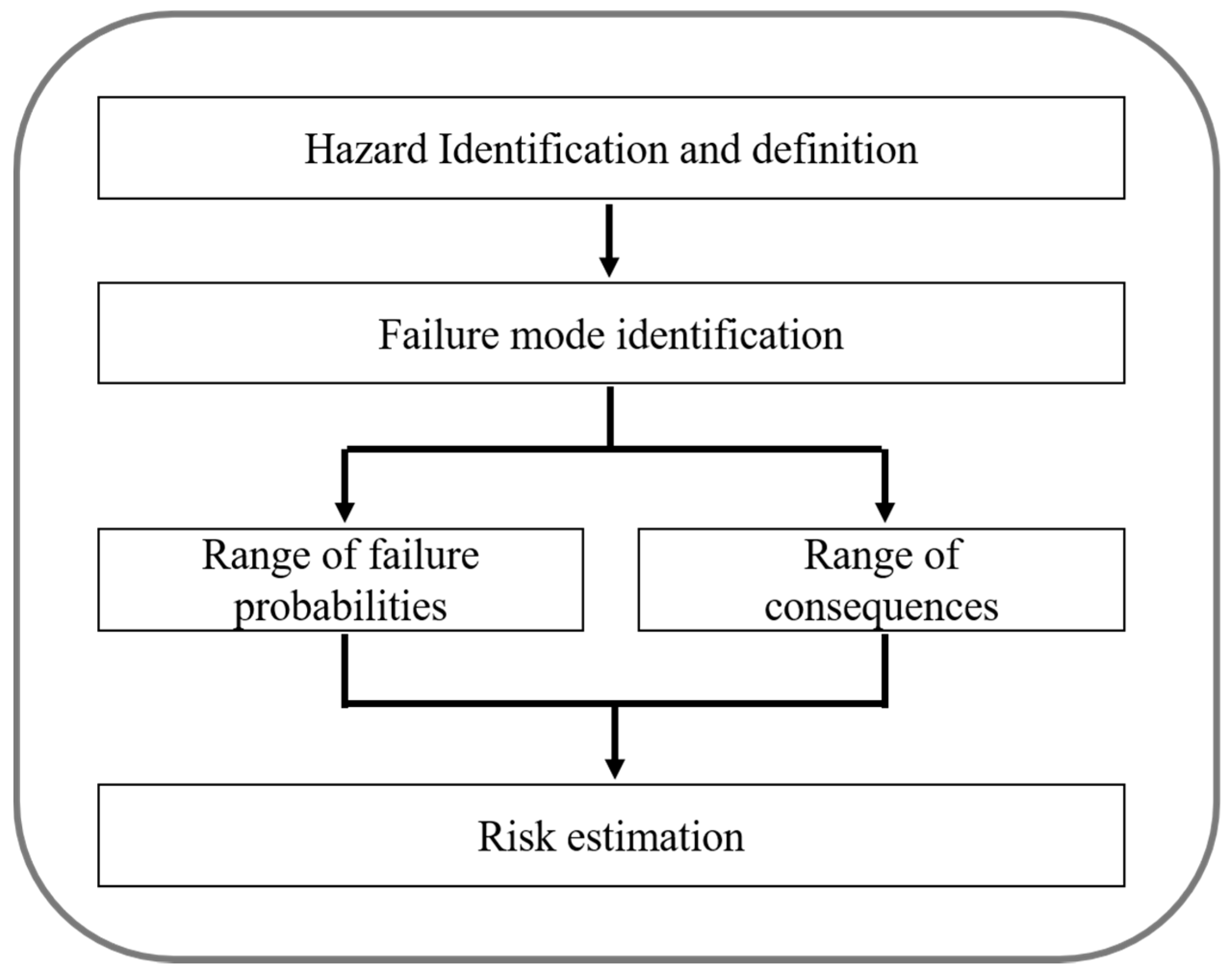
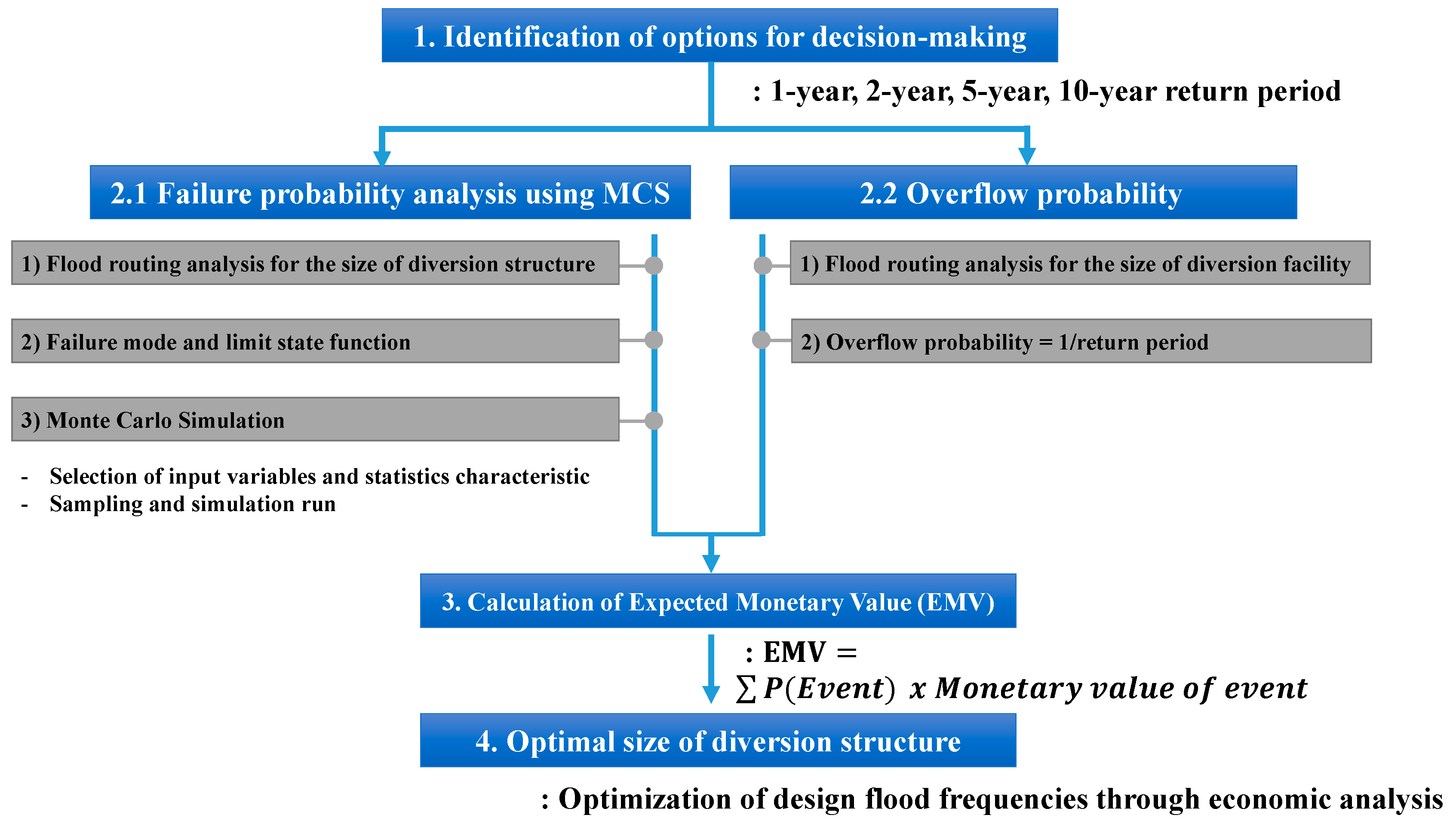


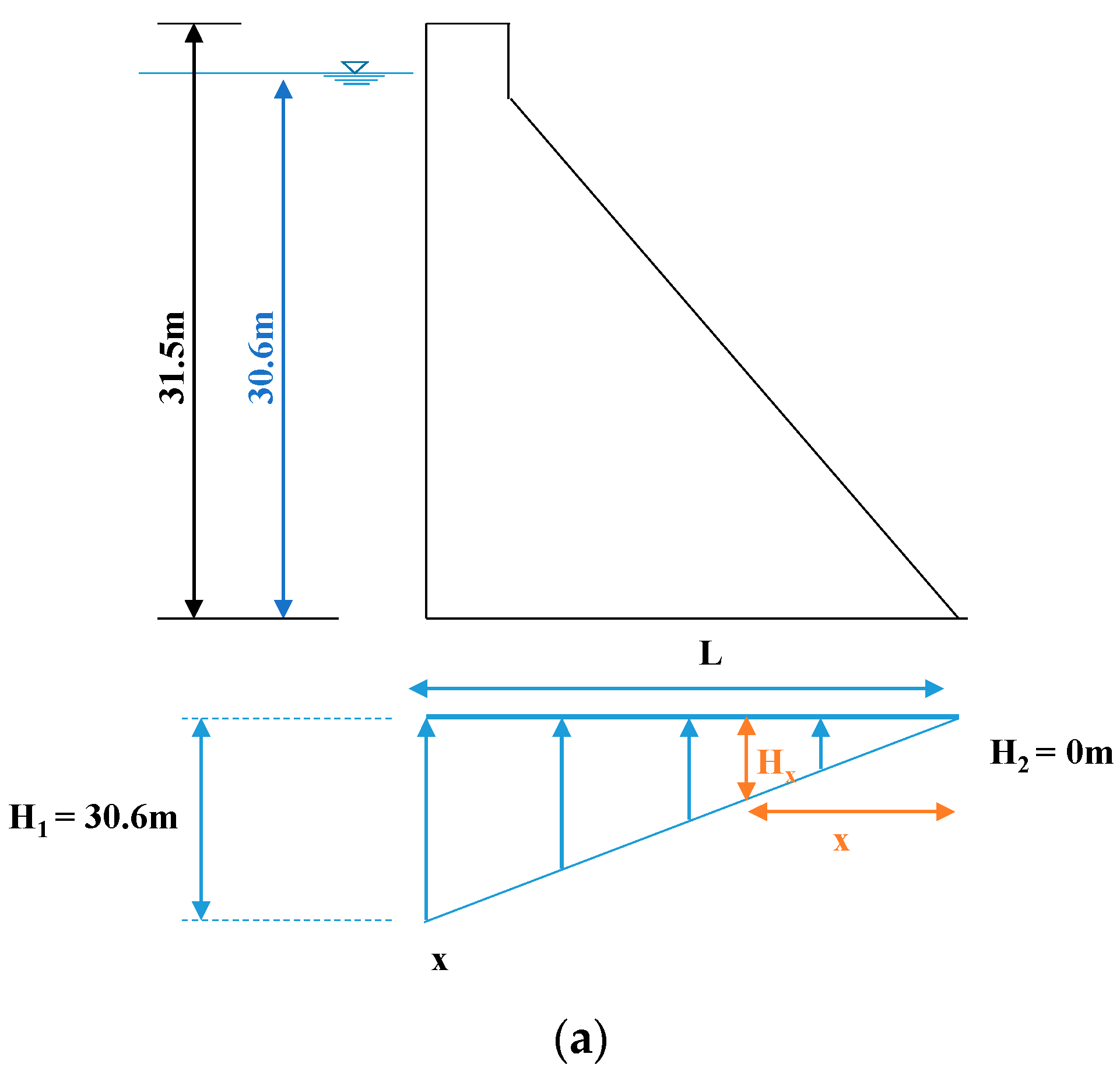
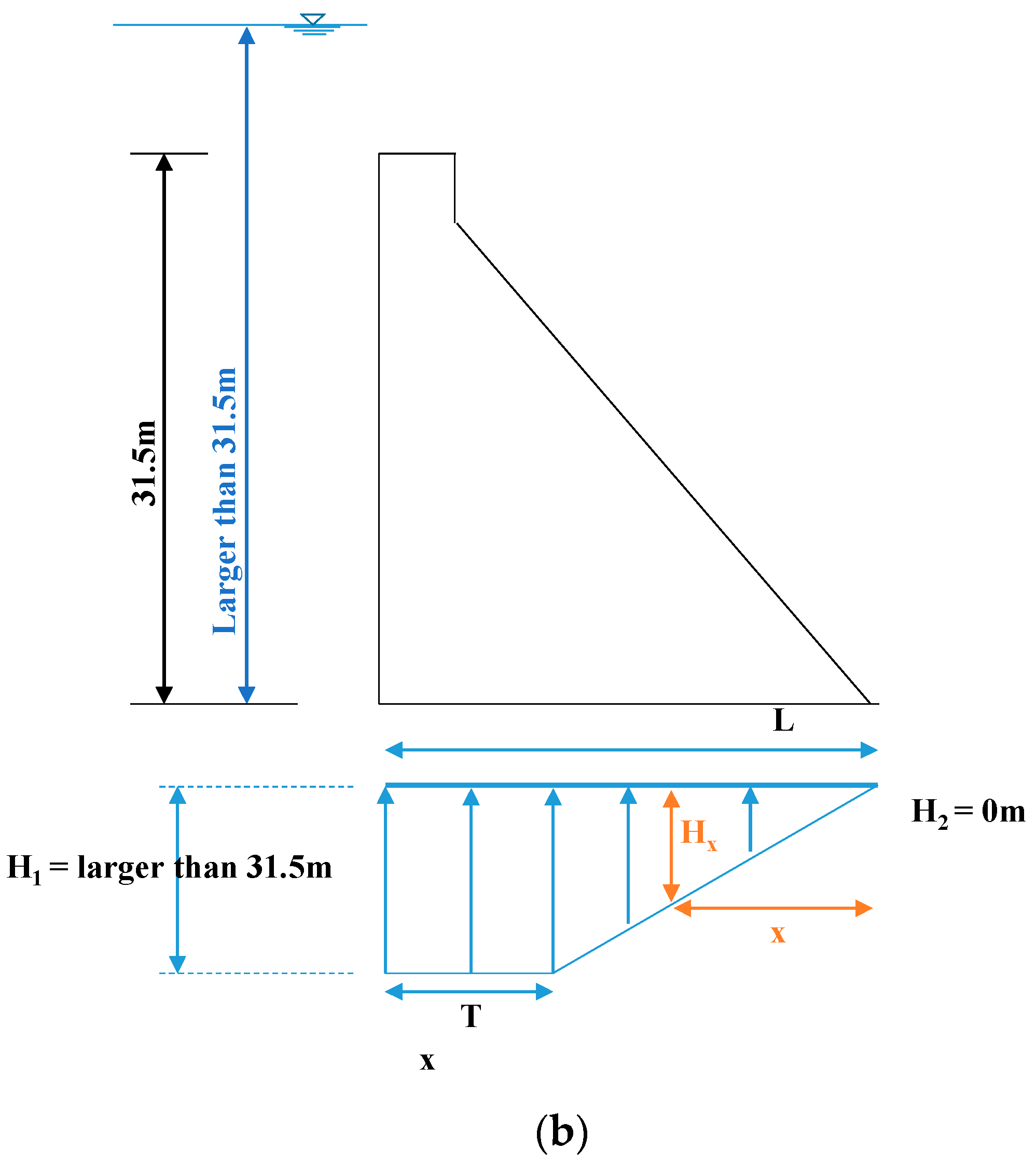
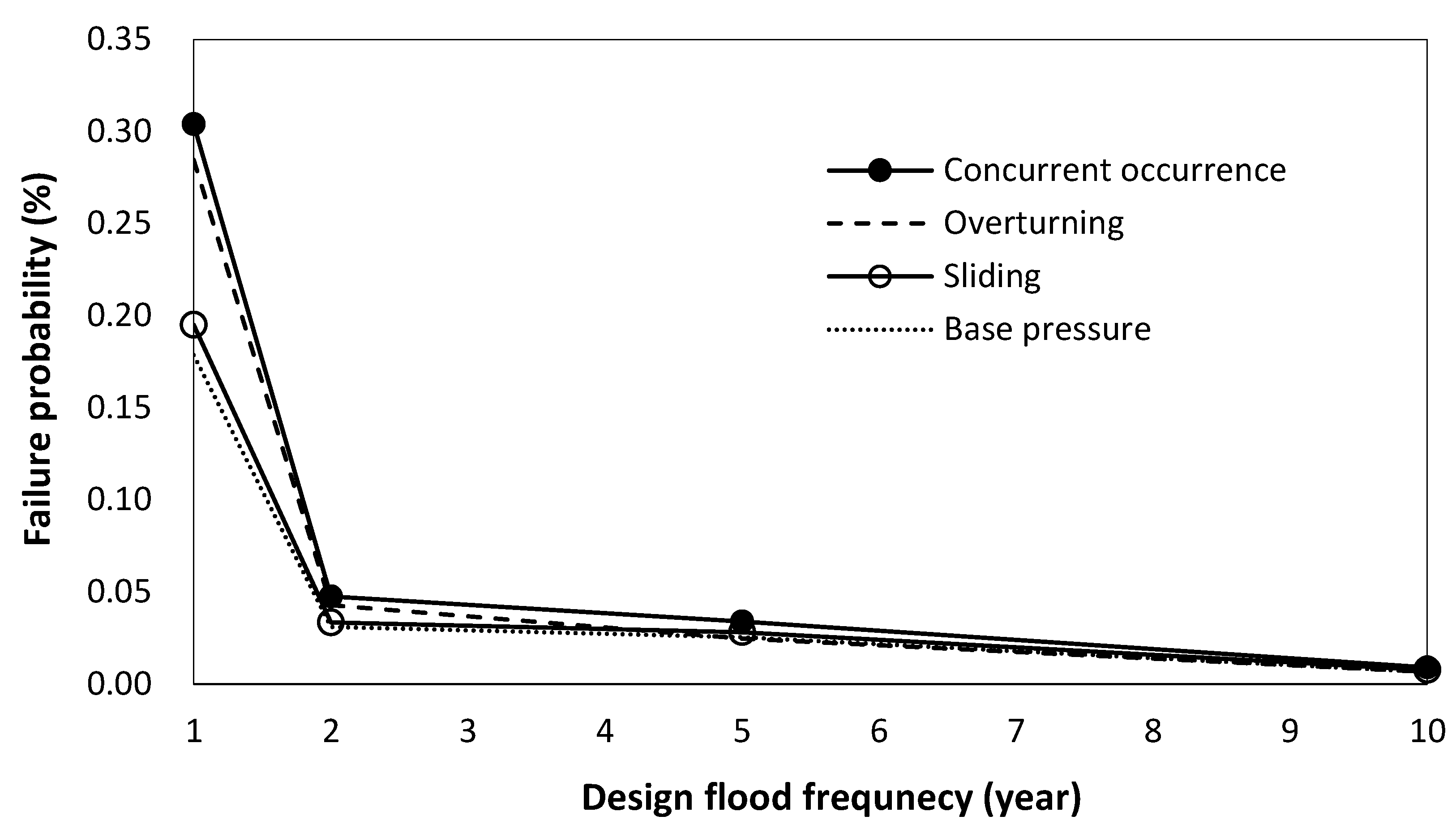
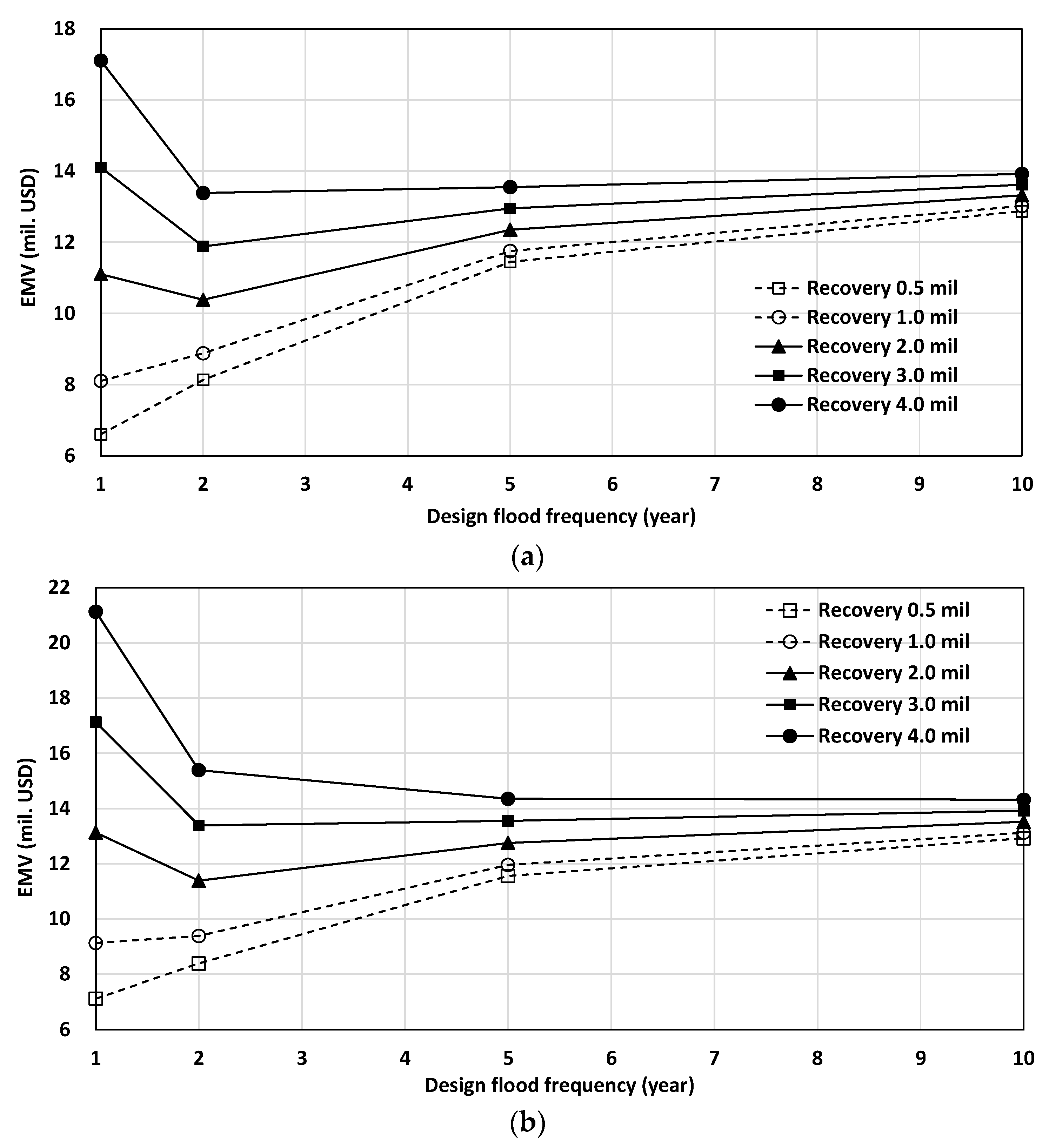
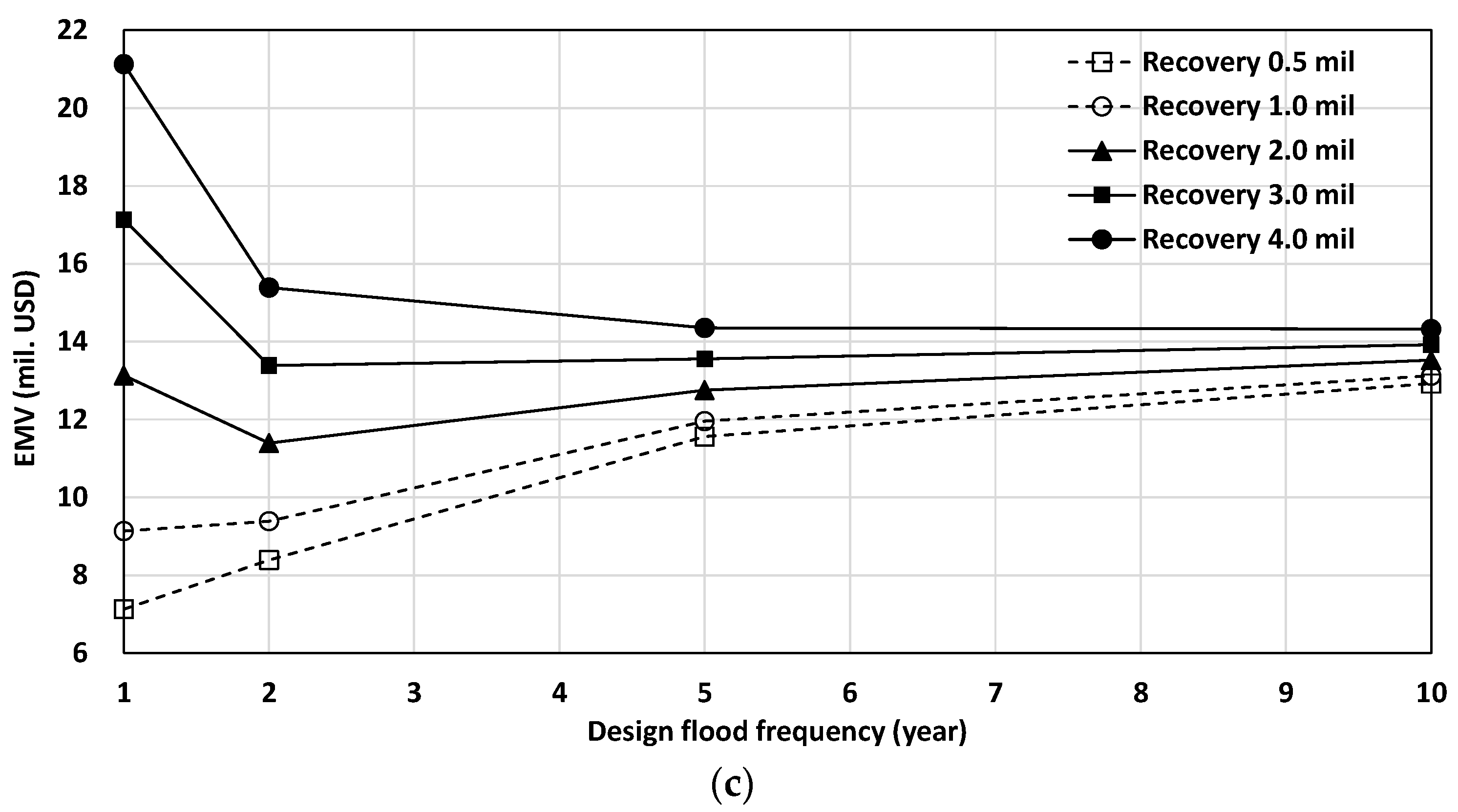
| Design Flood | No. of Diversion Tunnels | Upstream Water Level (EL. m) [a] | Freeboard (m) [b] | Dam Crest (EL. m) [a + b] | Cofferdam Height (m) | |
|---|---|---|---|---|---|---|
| Years | Discharge (m3/s) | |||||
| 1 | 1761 | 2 | 502.0 | 1.0 | 503.0 | 31.5 |
| 2 | 4187 | 4 | 507.6 | 1.0 | 508.6 | 37.1 |
| 5 | 6499 | 4 | 517.9 | 1.0 | 518.9 | 47.4 |
| 10 | 8084 | 4 | 521.6 | 1.0 | 522.6 | 51.1 |
| Condition | Deadload | Headwater | Tailwater | Uplift | Silt | Earthquake |
|---|---|---|---|---|---|---|
| Unusual loading condition (construction) | O | X | X | X | X | X |
| Usual loading condition (normal operating) | O | Normal operating level | Minimum | O | O (I.F.) * | X |
| Unusual loading condition (flooding discharge) | O | Standard project flood | O | O | O (I.F.) | X |
| Extreme loading condition (construction with an OBE **) | O | X | X | X | X | OBE |
| Unusual loading condition (normal operation with an OBE) | O | Normal operating level | Minimum | At pre-earthquake level | O (I.F.) | OBE |
| Random Variable | Probability Distribution | Distribution Parameters |
|---|---|---|
| Mass density of concrete | Normal |
|
| Friction angle of soil | Normal |
|
| Adhesion force of soil | Log normal |
|
| Height of deposit soil | Uniform |
|
| Mass density of deposit soil | Normal |
|
| Friction coefficient of deposit | Normal |
|
Disclaimer/Publisher’s Note: The statements, opinions and data contained in all publications are solely those of the individual author(s) and contributor(s) and not of MDPI and/or the editor(s). MDPI and/or the editor(s) disclaim responsibility for any injury to people or property resulting from any ideas, methods, instructions or products referred to in the content. |
© 2023 by the authors. Licensee MDPI, Basel, Switzerland. This article is an open access article distributed under the terms and conditions of the Creative Commons Attribution (CC BY) license (https://creativecommons.org/licenses/by/4.0/).
Share and Cite
Hong, W.; Eum, T.; Song, C.G. Design Optimization Methodology for Diversion Structure with Concrete Cofferdam Using Risk-Based Least-Cost Design Method. Appl. Sci. 2023, 13, 2903. https://doi.org/10.3390/app13052903
Hong W, Eum T, Song CG. Design Optimization Methodology for Diversion Structure with Concrete Cofferdam Using Risk-Based Least-Cost Design Method. Applied Sciences. 2023; 13(5):2903. https://doi.org/10.3390/app13052903
Chicago/Turabian StyleHong, Wonpyo, Taesoo Eum, and Chang Geun Song. 2023. "Design Optimization Methodology for Diversion Structure with Concrete Cofferdam Using Risk-Based Least-Cost Design Method" Applied Sciences 13, no. 5: 2903. https://doi.org/10.3390/app13052903





